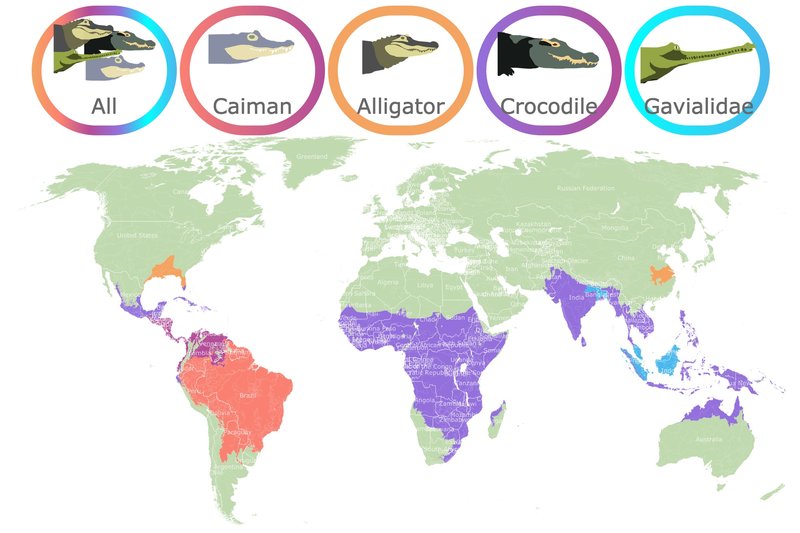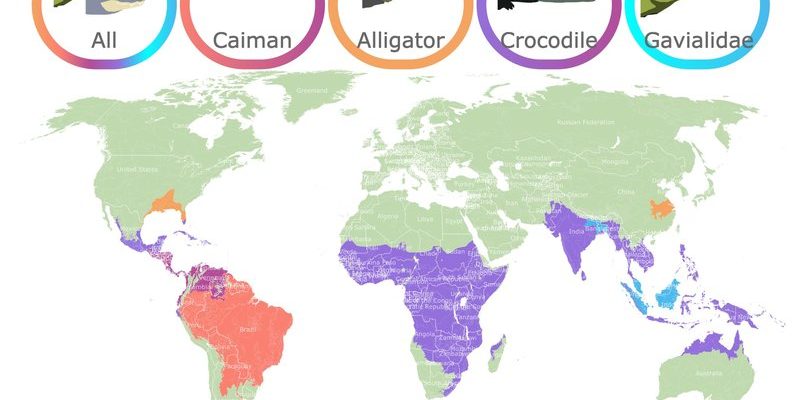
To put it simply, American alligators are like the ultimate survivors, adapting to different environments while holding on to their unique identities. This resilient species can thrive in both freshwater and brackish waters. They play crucial roles in their ecosystems, which is why understanding their distribution is important—not just for alligators, but for the environments they inhabit. So, let’s dive into where these remarkable reptiles make their homes!
Native Habitat of American Alligators
American alligators, or *Alligator mississippiensis*, primarily call the southeastern United States their home. They thrive in a variety of wetland habitats, including swamps, marshes, rivers, and lakes. Think of them as the top-tier tenants of the watery neighborhoods in places like Florida, Alabama, and Georgia.
Their ideal habitat includes warm temperatures and plenty of shallow water—perfect for basking in the sun during the day. These areas are rich in vegetation, providing cover and nesting sites. It’s almost like a luxurious resort for alligators! If you’re curious about how they manage to adapt, it’s all about being opportunistic. They can be found in man-made environments too, like golf courses or ponds in residential areas.
Interestingly, American alligators are also crucial to their ecosystems. They help maintain healthy populations of fish and other aquatic creatures by keeping their numbers in check. When they dig out holes to create nests, they also create deeper water areas that can be vital for other wildlife during dry spells. So, it’s safe to say that they’re not just chilling at the top of the food chain; they’re also playing a role in the wider ecological community.
Expanding Beyond the Southeastern U.S.
While the southeastern U.S. is the heartland for American alligators, they’ve expanded their range over the years. You might be surprised to learn that they are found in areas outside of their typical territory. They’ve made their way into parts of Texas and even into Mexico!
In Mexico, alligators can be found in regions like the northeastern states, where they inhabit marshes and swamps. Here’s the thing: their adaptability is impressive. They can live in both freshwater and coastal brackish waters, which gives them a slight edge over other reptiles.
But it doesn’t stop there! Reports of American alligators have even surfaced in countries like Cuba and the Bahamas. While they aren’t native to these places, their presence can be attributed to human actions—introduction through trade and habitat alteration. It’s fascinating how one species can stretch its reach across borders, isn’t it?
Habitat in the Caribbean: A Closer Look
In the Caribbean, American alligators can be found primarily in Cuba, where they thrive in the wetlands that provide ample food and nesting opportunities. The wetlands of Cuba have become vital habitats for these alligators, making them a crucial part of the local ecosystem. You might picture lush vegetation and calm, warm waters, which act as a perfect backdrop for these creatures.
In addition to Cuba, there are sightings of alligators in the Bahamas, where they have adapted to local conditions. Imagine a relaxed gator sunbathing on a beach—it’s a sight many people may not expect, but it really shows their adaptability! In these tropical environments, they play a significant role in controlling pest populations and maintaining the balance of their ecosystems.
However, it’s essential to consider the impact of these populations. Human activities can put pressure on their habitats, and their presence can sometimes result in conflicts with local communities. Understanding their distribution helps in conservation efforts, ensuring that these fascinating reptiles and their ecosystems can thrive together.
Climate Influence on Alligator Distribution
Climate plays a significant role in determining where American alligators can live. These reptiles are ectothermic, meaning they rely on external heat sources to regulate their body temperature. So, warm climates are their jam! That’s one reason why they’re mostly found in the southern parts of the U.S.
With climate change bringing warmer temperatures and shifting weather patterns, it’s interesting to consider how alligators might adapt in the future. If the climate continues to warm, it’s possible that we could see them moving into new areas that were previously inhospitable. Imagine spots further north, where they could establish new populations!
But, it’s not just about warmth—water availability is also critical. Alligators need sufficient freshwater habitats to thrive. Changes in rainfall patterns can affect their nesting and feeding grounds. It’s a delicate balance, and understanding how these factors interact helps scientists predict future ranges for these alligators.
Conservation Status and Global Presence
The American alligator was once on the brink of extinction due to habitat loss and hunting. Thanks to conservation efforts, their population has increased significantly. They’re currently classified as “Least Concern” on the IUCN Red List, which is a huge win for wildlife enthusiasts!
However, they still face challenges. Urbanization, pollution, and climate change are ongoing threats to their habitats. As they venture into new regions, understanding and monitoring their distribution becomes crucial for their conservation.
Globally, their presence can be a double-edged sword. While they’re fascinating contributors to ecosystems, they can also cause conflicts when they expand into human-dominated areas. Effective management strategies will be key in balancing alligator populations and human interests.
American alligators are truly remarkable creatures with a fascinating range. From their native homes in the southeastern U.S. to their surprising appearances in the Caribbean and beyond, these reptiles have shown incredible adaptability. They remind us of the importance of preserving our natural habitats for the sake of the amazing wildlife that calls them home.
As we grapple with environmental changes and human expansion, understanding where American alligators are found around the world not only helps in conservation efforts but also deepens our appreciation for these ancient reptiles. Honestly, the journey of the American alligator reflects the ongoing story of nature’s resilience and adaptability, something we can all learn from. So next time you think of alligators, remember they’re more than just swamp dwellers—they’re global survivors!

